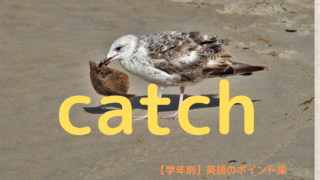句動詞〔 他動詞 + 目的語 + [前] with 〕
今回は前置詞 with とコンビを組んで「AにBを与える(くっつける)」という表現をみていきます。
| 動詞+目的語+前置詞 | 前置詞の意味 | (参考)中心義 | ||
| 他V +目的語+ from | 妨げる | 抑制・防止 | ~から | |
| 当稿 | 他V +目的語+ with | 与える | 供給 | ~と共にある |
| くっつける | ||||
まず with の意味から
withの中心義:・・・と共にある
[前] with ❶与える<供給>
❷くっつける
この表現をするのにメインとなる動詞はもちろん「与える」「くっつける」系の意味を持ったものですが、コンビを組む前置詞のwithもそれらの意味を持ち、この両者によりいろいろな意味の「与える」「くっつける」系の表現をします。
with(与える・くっつける)を使った他V語法(熟語)
① provide A with B / AにBを供給する
② supply A with B / 同上
③ furnish A with B / 同上(備えつける)
④ present A with B / AにBを与える(贈呈する、差し出す)
| give | ||
| あらかじめ見越して提供する | provide | furnish |
| 不足しているものを提供する | supply | |
| 目の前に提示する(儀礼的贈呈) | present | |
⑤ connect A with B/ AとBを結びつける
⑥ combine A with B / AとBを結びつける
⑦ associate A with B / AをBに結びつける(て考える)
| 結びつけるものを間に用いて使う /A,B,C,D・・ → A + B |
connect |
| お互いの特徴を失うほど結びつける / A + B → C |
combine |
| [名]仲間 / soci → social 社会 | associate |
⑧ relate A with B / AをBと関連づける
withは主に⦅英⦆/ to B も有り
⑨ identify A with B/ AをBと同一視する
⑩ mix A with B / AとBを混ぜる
⑪ share A with B / AとBを共有する
⑫ compare A with B / AとBを比べる
to B も有り
例文を見てみよう
①⦅ provide + A + with B ⦆
AにBを供給する
———————————–
We provided the children with lunch.
私たちは子どもたちに昼食を与えた。
————————————
書き換え provide B to(for) A
=We provided lunch for the children.
②⦅ supply + A + (with) B ⦆
AにBを供給する
———————————–
The bank supplies customers (with) a wide range of services.
その銀行は顧客に広範囲なサービスを提供している。
*⦅米⦆ではwithを省略することもある。
————————————
書き換え supply B to(for) A
————————————
受動態文
Oxygen must be constantly supplied to the brain.
酸素は常に脳に供給されなければならない。
③⦅ furnish + A + with B ⦆
AにBを供給する
———————————–
Can you furnish us with the necessary information?
私たちに必要な情報を提供してくれませんか。
————————————
書き換え furnish B to A
= Can you furnish the necessary information to us ?
④⦅ present + A + with B ⦆
AにBを与える(贈呈する)
[他V] prizént ・・ 発音・アクセント注意
———————————–
The company presented him with a medal for his long years of service.
その会社は彼の長年の勤めに対し、彼にメダルを贈った。
————————————
書き換え present B to A
= The company presented a medal to him for his long years of service.
⑤⦅ connect + A + with B ⦆
AとBを結びつける (連想する)
———————————–
People connect Iceland with glaciers.
人々はアイスランドというと氷河を思い浮かべる。
———————————–
発音注意;glacier [グレイシャ]
⑥⦅ combine + A + with B ⦆
AとBを結びつける
———————————–
You should combine your language ability with your business skills.
あなたは語学力を仕事の技能に結び付けるべきだ。
⑦⦅ associate + A + with B ⦆
AとBを結びつける(て考える)
———————————–
People associate old age with a decline in mental abilities.
人は高齢を知能の衰えと結びつけて考える傾向がある。
———————————–
知能: mental abilities (or powers)
⑧省略
⑨⦅ identify + A + with B ⦆
AをBと同一視する(だと考える)
———————————–
The mayor identified the interests of the citizens with his own prosperity.
市長は市民の利益を自身の繁栄と同一に考えた。
*mayor 市長 [メア] /interests 利益⦅通例~s⦆
———————————–
*しばしば受け身で用いる
Happiness is often identified with Wealth.
幸福はしばしば裕福と密接に結びつけて考えられる。
⑩⦅ mix A with B ⦆
AとBを混ぜる
———————————–
IF you mix yellow with (or and) blue, you get green.
黄色と青を混ぜると緑になる。
———————————–
Don’t mix business with pleasure.
仕事と遊びを混同するな。
*pleasure : 遊び ⇔ business 仕事
喜び
⑪⦅ share A with B ⦆
AをBと共有する(分け合う)
———————————–
I’m looking for someone to share a room with me at the dormitory.
私は寮で部屋を私と共有してくれる人を探している。
*dormitory 寮
⑫⦅ compare A with B ⦆
to B も有り
AとBを比較する
AをBにたとえる
———————————–
He compared his test results with(to) those of others.
彼はテスト結果を他人と比べた。
———————————–
Life is often compared to(with) a voyage.
人生はしばしば航海にたとえられる。
*「たとえる」という意味ではtoがよく使われる。
まとめ
今回は[前]withと結びつく句動詞を紹介してきました。
withの中心義は「共にある」という意味です。
例えば、<一緒に(くっついて)食べましょう。これ食べる?<与える>>という場面を想定すれば理解が進むと思います。
次はまた別の句動詞をご紹介したいと思います。お楽しみに。














































































































